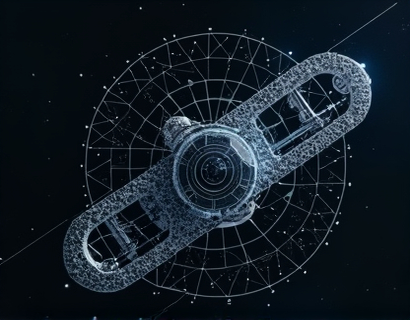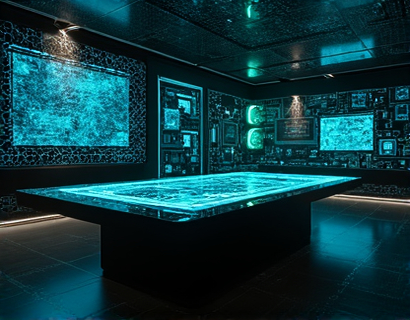Unlocking Ancient Wisdom: A Deep Dive into Historical Insights and Cultural Heritage for Modern Audiences
Embarking on a journey through the annals of time, one can uncover the profound wisdom and cultural treasures of ancient civilizations. This comprehensive guide serves as a bridge between the past and the present, offering a unique perspective that enriches the understanding of history enthusiasts and cultural heritage seekers. The aim is to delve deep into the historical insights and cultural legacies that continue to resonate with modern audiences, providing a rich tapestry of knowledge that transcends epochs.
The study of ancient civilizations is not merely an academic pursuit but a vital endeavor that informs and enriches our contemporary world. From the monumental architecture of the Egyptians to the philosophical musings of the Greeks, each civilization has left an indelible mark on human culture and thought. This exploration will traverse various ancient societies, highlighting their contributions and offering insights that remain relevant today.
Ancient Egypt: A Land of Mystique and Innovation
One of the most enigmatic and influential civilizations is that of Ancient Egypt. Known for their monumental architecture, the Egyptians built structures that have stood the test of time, such as the Pyramids of Giza and the temples of Karnak. These architectural marvels are not just testaments to their engineering prowess but also reflect their deep spiritual beliefs and social organization.
The Egyptians were pioneers in many fields, including medicine, mathematics, and astronomy. Their medical texts, such as the Ebers Papyrus, contain treatments for various ailments, showcasing an advanced understanding of human anatomy and disease. Mathematically, they developed a decimal system and calculated the value of pi with remarkable accuracy for their time. Astronomically, they meticulously tracked celestial bodies, creating a calendar that was remarkably precise.
Beyond their practical achievements, the Egyptians left a rich legacy of art and literature. The Book of the Dead, a collection of spells and prayers, provides insight into their beliefs about the afterlife. Artistic representations, from the serene beauty of the Venus of Tanis to the powerful imagery of pharaohs, offer a window into their aesthetic sensibilities and cultural values.
Ancient Greece: Cradle of Western Civilization
Ancient Greece is often hailed as the cradle of Western civilization, a period that saw the flourishing of philosophy, democracy, and the arts. The city-states of Athens and Sparta were centers of intellectual and cultural activity, each contributing uniquely to the Greek heritage.
Athens, under the leadership of figures like Pericles, became a beacon of democracy and cultural achievement. The Parthenon, a temple dedicated to Athena, stands as a symbol of their architectural and artistic excellence. The works of playwrights such as Sophocles and Euripides, and philosophers like Socrates, Plato, and Aristotle, laid the foundations for Western thought.
Socrates, through his method of questioning, encouraged critical thinking and self-examination. Plato's Republic explores the nature of justice and the ideal state, while Aristotle's works span a vast array of subjects, from logic and metaphysics to ethics and politics. Their ideas continue to influence modern philosophy, science, and politics.
Greek art, characterized by its emphasis on human form and emotion, revolutionized the visual arts. Sculptures like the Discus Thrower and the Venus de Milo exemplify the Greeks' pursuit of ideal beauty and proportion. The Olympic Games, originating in ancient Greece, have evolved into a global event that celebrates athletic excellence and international unity.
Mesopotamia: The Cradle of Civilization
Often referred to as the cradle of civilization, Mesopotamia, located between the Tigris and Euphrates rivers, gave birth to some of the world's earliest urban centers. The Sumerians, Akkadians, Babylonians, and Assyrians each contributed to a rich cultural and intellectual legacy.
One of the most significant achievements of Mesopotamia is the invention of writing, specifically cuneiform. This system allowed for the recording of laws, literature, and historical events, preserving knowledge for future generations. The Code of Hammurabi, one of the earliest known sets of laws, demonstrates an early attempt at legal codification and social justice.
Mesopotamian astronomy was highly advanced, with the identification of constellations and the development of a sexagesimal (base-60) system that influenced timekeeping and mathematics. Their understanding of the solar year and the cycles of the moon was crucial for agriculture and religious practices.
Literature from Mesopotamia, such as the Epic of Gilgamesh, offers insights into their myths, values, and human experiences. This epic, one of the earliest known works of literature, explores themes of friendship, immortality, and the human condition, resonating with readers across millennia.
Indus Valley Civilization: A Mysterious Legacy
The Indus Valley Civilization, flourishing around 2600-1900 BCE, is one of the least known but no less significant ancient cultures. Located in present-day Pakistan and northwestern India, this civilization is renowned for its urban planning and sophisticated water management systems.
Cities like Harappa and Mohenjo-Daro exhibit advanced infrastructure, including grid-patterned streets, public baths, and drainage systems. The uniformity of weights, measures, and pottery suggests a high level of social organization and economic stability.
Despite the lack of deciphered writing, archaeological evidence points to a complex society with trade networks extending to Mesopotamia and the Persian Gulf. Artifacts such as seals and figurines provide glimpses into their religious practices and daily life. The mysterious decline of the Indus Valley Civilization remains a topic of ongoing research and speculation.
Mayan Civilization: Masters of Astronomy and Architecture
The Mayan civilization, centered in what is now Mexico, Guatemala, Belize, and parts of Honduras and El Salvador, is celebrated for its achievements in astronomy, mathematics, and architecture. The Mayans developed a sophisticated calendar system that accurately tracked celestial cycles, including the solar year and the Venus cycle.
Their cities, such as Tikal and Chichen Itza, are marvels of engineering and art. The Pyramid of Kukulcan at Chichen Itza, with its precise alignment to the equinoxes, demonstrates their advanced understanding of astronomy. The Mayan script, one of the most complex in the pre-Columbian Americas, combines logographic and syllabic elements, allowing for detailed historical and mythological records.
Mayan mathematics included the concept of zero, a crucial development for their calendar systems and astronomical calculations. Their knowledge of medicine, agriculture, and architecture also reflects a deep understanding of their environment and a commitment to innovation.
Conclusion: Bridging the Past and Present
The exploration of ancient civilizations reveals a tapestry of human achievement and resilience. From the monumental structures of Egypt to the philosophical inquiries of Greece, each culture has contributed uniquely to the human experience. These ancient wisdoms offer valuable lessons and insights that remain relevant today, whether in the realms of governance, science, or the arts.
By studying and appreciating the cultural heritage of these civilizations, modern audiences can gain a deeper understanding of the roots of contemporary society. This connection to the past not only enriches our knowledge but also inspires us to build a more informed and compassionate future. As we continue to uncover and share these ancient treasures, we honor the legacy of those who came before us and ensure that their wisdom endures for generations to come.










































